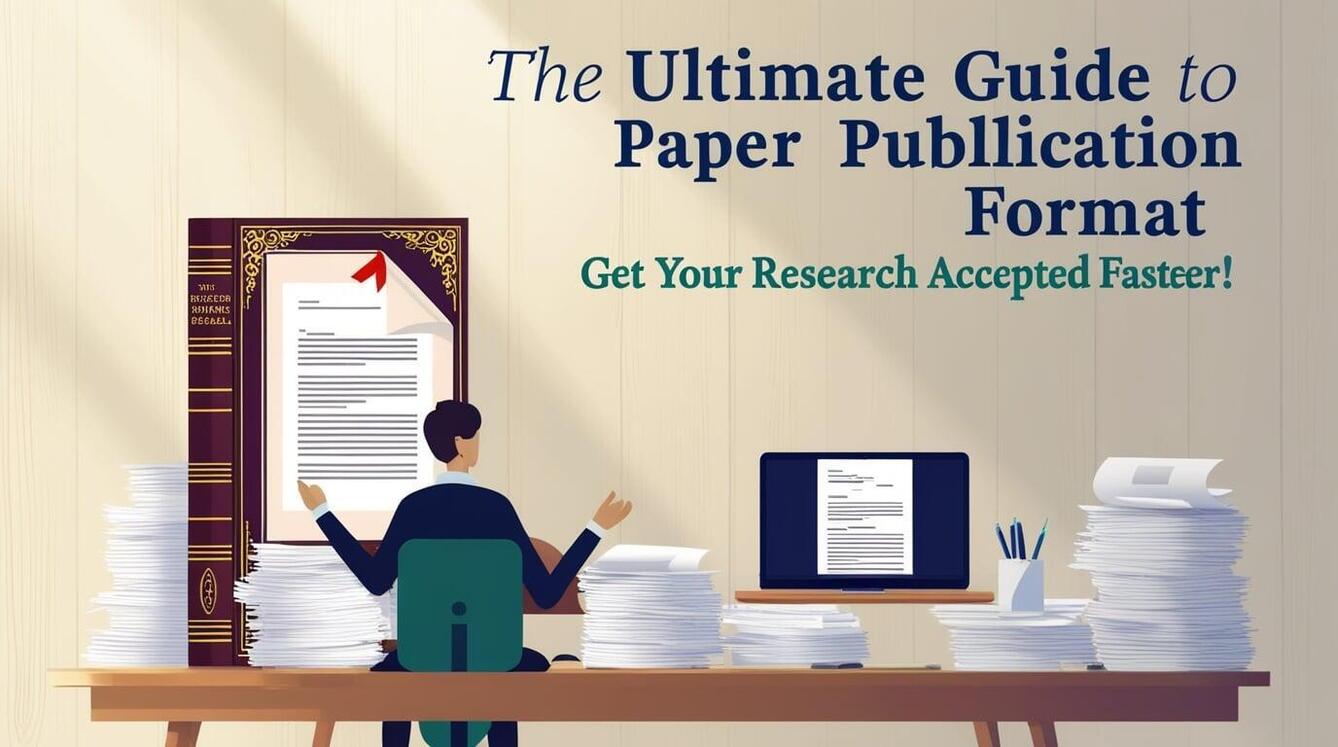Introduction
A well-structured paper publication format is crucial for researchers looking to get their work accepted in high-impact journals. Poor formatting can lead to immediate rejection, no matter how strong the research is. In this guide, we will cover the essential components of a properly formatted research paper, ensuring your submission meets journal standards and increases your chances of acceptance.
Why Paper Publication Format Matters
Many researchers underestimate the importance of proper formatting. A well-organized paper:
Enhances readability and comprehension
Aligns with journal requirements
Increases credibility and professionalism
Reduces the chances of rejection due to technical issues
By following a structured paper publication format, you demonstrate academic rigor and attention to detail, making your work more appealing to reviewers.
Key Elements of a Standard Paper Publication Format
1. Title and Abstract
The title should be concise, descriptive, and include relevant keywords.
The abstract should summarize your research, including objectives, methodology, key findings, and conclusions in 150–250 words.
2. Introduction
Clearly state the research problem and objectives.
Provide background information and justify the significance of your study.
Outline the structure of your paper.
3. Literature Review
Summarize previous research and highlight gaps in existing knowledge.
Properly cite all references following the required citation style (APA, MLA, IEEE, etc.).
4. Methodology
Describe the research design, data collection methods, and analytical approach.
Ensure clarity so other researchers can replicate your study.
5. Results and Discussion
Present findings using tables, graphs, and visual aids.
Interpret results in the context of your research objectives.
Compare findings with previous studies to highlight their significance.
6. Conclusion
Summarize key takeaways from your research.
Discuss limitations and suggest future research directions.
7. References
Format references according to the journal’s requirements (APA, IEEE, Harvard, etc.).
Ensure consistency and accuracy in citations.
Best Practices for Formatting Your Research Paper
1. Follow Journal Guidelines
Each journal has specific formatting rules. Before submitting, thoroughly review their guidelines regarding:
Font type and size (usually Times New Roman, 12pt)
Line spacing (typically double-spaced)
Margin settings (1-inch margins on all sides)
Citation style (APA, MLA, IEEE, Chicago)
2. Use Proper Headings and Subheadings
Organize content using headings like Introduction, Methodology, Results, and Conclusion. Use H1, H2, and H3 tags to improve readability and SEO performance.
3. Keep Sentences and Paragraphs Concise
Avoid long, complex sentences that can confuse readers.
Use bullet points and numbered lists to improve clarity.
4. Proofread and Edit Thoroughly
Eliminate grammatical errors and typos.
Use tools like Grammarly or Hemingway Editor to refine writing.
Seek peer reviews before submission.
Get Published in Scopus, SCI, SCIE, & UGC Care Journals
Are you struggling with journal publication? Our Journal Publication Support service ensures your research paper meets the highest academic standards for successful publication in Scopus, SCI, SCIE, and UGC Care journals. We help researchers, scholars, and academicians navigate the complex publishing process with ease.
Common Mistakes to Avoid in Paper Publication Format
🚫 Ignoring journal-specific formatting guidelines – Leads to immediate rejection.
🚫 Improper citation and referencing – Causes plagiarism concerns.
🚫 Weak structure and organization – Makes research hard to follow.
🚫 Excessive jargon and technical terms – Reduces readability.
🚫 Skipping proofreading and editing – Increases the chances of errors.
How to Ensure Your Paper Meets Formatting Standards
✔ Use journal-approved templates – Many journals provide templates to simplify formatting.
✔ Check for consistency in citations and references – Avoid mismatches between in-text citations and bibliography.
✔ Get professional formatting assistance – Services like Editage and Scribendi offer expert formatting help.
✔ Use reference management tools – Software like Zotero, Mendeley, and EndNote streamline citation formatting.
Conclusion
A well-structured paper publication format significantly boosts your research’s chances of acceptance. By following the essential formatting guidelines and best practices outlined in this guide, you can avoid common mistakes and make a strong impression on journal reviewers.
Before submission, always double-check your formatting against the journal’s requirements and seek expert feedback to refine your work.
📢 Need help formatting your research paper? Share your queries in the comments or explore professional formatting services to ensure flawless submission!


